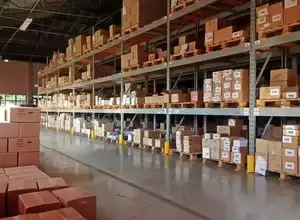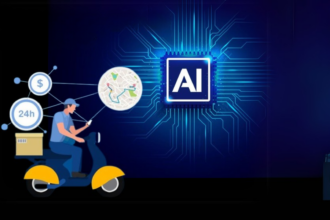As companies tighten their supply chains, warehouse automation continues to drive big gains, with Gartner’s recent Hype Cycle report finding that 92% of respondents said they have or are planning to invest in robotics, with 42% mid-deployment and planning to scale.
Despite this growing trend, many companies still find themselves ill-prepared to deploy warehouse robotics solutions at scale and struggle to harness the full power of warehouse automation’s capabilities.
Initial warehouse automation projects are often riddled with unanticipated challenges that cannot only make extracting value difficult, but also complicate future scaling efforts. To drive long-term success, operators need to identify common pitfalls to scaling automation and implement strategies to see return on their investment.
Of course, many turn to automation solutions like autonomous mobile robots (AMRs) today to replace labor or make up for workforce gaps that are hard to fill, but that is only one part of the story. Short-term ROI gains are a nice boost to operations, but evaluating this technology in this transactional way is myopic at best and, at worst, fails to realize the massive potential of turning your warehouse into a connected ecosystem.
Those who are able to leverage automation as a competitive differentiator understand that such solutions can deliver massive productivity gains over time by: seamlessly integrating with existing infrastructure, serving as data collectors and delivering deep actionable insights, delivering a connected system that continuously improves itself producing step-function performance improvements via “network effects,” and, ultimately, orchestrating highly complex systems at scale. Let’s dive into each of these outcomes a bit more.
Seamlessly Integrating with Existing Infrastructure
Automated warehouse investments are most successful at delivering ROI when integrated seamlessly into existing warehouse infrastructure and systems, rather than deployed as a standalone resource. When looking to address critical throughput challenges, operators should aim to work with vendors to develop a deployment roadmap that combines existing warehouse capabilities with the potential capabilities of new technology.
The modern-day warehouse consists of an intricate system of manual workflows, warehouse management systems (WMS), IT infrastructure, tablets/peripheral devices, various sensors and of course, human workers. By considering warehouse routes, travel distances, existing infrastructure, and warehouse culture operators can collaborate with vendors to not only deploy automation, but also enable the creation of a more resilient and flexible warehouse environment that can adapt to change and integrate disparate workflows over time. This digital transformation can in turn enable companies to respond more effectively and proactively to changing market and labor concerns, strengthening operations in the long-term.
Serving as Data Collectors and Delivering Deep Actionable Insights
Data is the lifeblood of the living warehouse. Without easy access to accurate real-time data, warehouses struggle to anticipate customer demands, respond to errors, reduce safety events or provide other quantitative evidence that can deliver vital throughput and operations improvements.
The warehouse robots of today are no longer confined to their assigned paths and operator-assigned instructions. The newest generation of robots, AMRs, prioritize seamless integration with data sources that facilitates advanced tracking and data collection, providing operators with insights that inform performance goals and long-term business strategy.
Human workers can be prone to errors and risk forgetting important process documentation; modern warehouse robots can not only deliver an accurate inventory of environmental conditions, productivity, and robot health at any time, but they can also provide operators with deep insights into the efficacy of facility layout (through heatmaps), human-robot safety (through alerts and exception reporting), and optimal utilization and forecasting (through dashboards). In the unique case where a facility has access to a robot command center, operators also have the benefit of a virtual team of experts that have a familiarity with the technology and the unique ebbs and flows of that specific facility and use that human-in-the-loop knowledge to improve system performance.
Producing Step-Function Performance Improvements via Network Effects
For decades, automated guided vehicles (AGVs), have been a straightforward choice for companies interested in filling labor gaps with highly repetitive automated workflows. Since these solutions are prescribed systems that follow set routes, they value they can deliver at scale is linear: add one robot, deliver a pre-defined amount of throughput, and see a certain amount of cost savings.
Flexible automation like AMRs however, are a game-changer in terms of productivity because they operate as a connected system that is constantly sharing insights and improving performance over time –– a “network effect.”
Connected robot fleets that both communicate with other devices in the facility and can have their software updated in the cloud, offer massive throughput improvement potential. Not only do these devices learn how to better navigate around a specific facility, but the orchestration software itself learns how to better manage the robot fleet for optimal performance. To boot, software updates to the fleet can deliver performance upgrades based on insights from every robot in the vendors’ fleet. In many cases, experienced forklift drivers have the combined knowledge of their experience at the wheel, but other robots have the collective experience of every single robot that has ever been deployed.
Orchestrating Highly Complex Systems At-Scale
Rather than evaluating robots as independent workers to be inserted in and out of tasks as required, operators should take a more expansive view of the benefits afforded by their automation investment.
Modern fleet orchestration software runs robot fleets as a highly synchronized system that is constantly analyzing operations and dynamically adjusting task allocation in real-time. So, it’s not only that the robots are safely running down the aisles autonomously, but there is extensive autonomy being applied to how task are prioritized, how to manage traffic congestion, and how to orchestrate an entire robot fleet in-real time. This instantaneous, systems-level optimization is well beyond the capacity of a human to perform at scale.
As labor costs continue to rise amid demanding consumer expectations, warehouse automation proves to be an eye-catching solution. To engineer workflows for bigger and better work and empower organizations to compete on their operations efficiently, operators should capitalize on the full power of robots by thinking about these investments as a highly orchestrated system that enables their workers to deliver more value, is flexible to handle the changing face of operations, and is expected to deliver a continuous improvement annuity stream like a performance dividend. The next step of warehouse operations is not far behind but requires an integrated warehouse to accelerate the next level of digital transformation.







